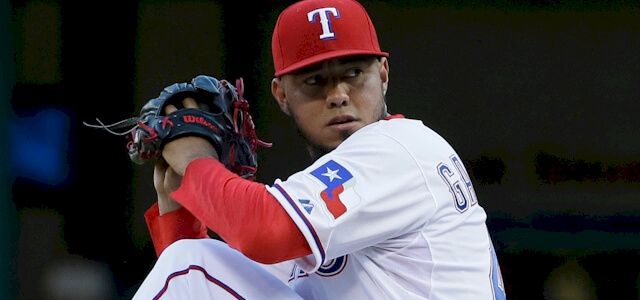
Right-handed free agent pitcher Yovani Gallardo has averaged 191 innings and 13 wins over the last seven seasons.
The Detroit Tigers made a small ripple rather than a big slash at the recent general managers meeting by hiring Jay Sartori, an Apple executive and former assistant with the Blue Jays, to head a beefed-up analytics department. Sartori is going to lead a staff that will also have two new full-time employees and two consultants.
This indicates that the Tigers are, a little belatedly, joining most other MLB clubs by buying whole-hog into the idea that better statistical analysis will help the team win more games. Though obviously sabermetrics and its spawn help us understand performance in retrospect, the proposition that it translates into more success hasn’t yet been proven conclusively.
Certainly, one thing is true: better analytics helps only if the manager and coaches believe in the value of the information generated, can apply it to game strategy, and are willing and able to translate it to players in a way that will help them perform better. From this perspective, the hiring of Sartori in conjunction with the retention of Brad Ausmus and the ascendancy of Al Avila means that Detroit is committing now for sure to a post-Jim Leyland regime.
No one got the impression that crusty old Leyland was likely to embrace the new analytics approach over the traditional reliance on scouting reports. The brainy Ausmus certainly will heed the data, though.
Hopefully, Sartori and his staff can help immediately in the pressing off-season task of rebuilding the team through the acquisition of two starting pitchers and massive in the bullpen. Reports that the club is bidding for Yovani Gallardo may be the first indication that the front office is looking closely at analytics in deciding how to spend Mike Ilitch’s money. Gallardo is not one of the best-known starters on the market, but he would slot in nicely as the club’s No. 4 starter behind Verlander, Sanchez, and Norris. And if the Tigers don’t go after the pricey top-tier starters, it may be a sign that they recognize that beefing up the bullpen is even more of a necessity for winning games.
The new world champions certainly demonstrate that priority. Kansas City in 2015 had the best bullpen in the league; Detroit the worst. The Royals’ bullpen was extremely deep and dominant; in the back of it were three men who could be ace closers for any other team. Detroit’s pen was dismal, collectively allowing an average of 4.99 runs per game—by far the league’s worst. Collectively, the Tigers converted only thirty-five of sixty save opportunities compared to KC’s fifty-six of seventy-six.
The two clubs’ rotations, despite all Detroit’s starting pitcher issues, were not all that different as measured by many stats. The two clubs had about the same number of “quality starts.” The biggest difference on the staffs was that the Tigers served up the league’s most homers, 193, while the Royals allowed only 155, second least in the league.
Ironically, though, the Tigers’ new emphasis on analytics comes at a time when the Royals’ offense seemed to defy sabermetric tenets. The recent wisdom says getting on base with walks and hitting homers are what matters most, and strikeouts are no worse than any other outs. But the Royals score runs the old-fashioned way, and on offense their contrast with the Tigers couldn’t be more extreme.
*The Royals put the ball into play; the Tigers don’t. KC tied for second with Toronto in the AL with a .269 team batting average; the Tigers were first with an essentially identical .270. But how they got there was vastly differently. The Royals struck out less—far less—than any other team, a season total of 973; no other team was below 1,100, and the Tigers with 1,259 were above the league average of 1,219. On the flip side of the same coin, KC was last in the league in walks, with just 383, while the Tigers, with 455, were just below league average of 470.
*The Royals don’t hit many home runs. KC was fourteenth in the league in homers, ahead of only the White Sox, with 139; Detroit was eleventh with 151.
*The Royals run the bases well; Detroit doesn’t. With 104 steals, KC was second in the league to Houston, but with only thirty-four times caught stealing, they had the league’s best success rate, 75 percent. The Tigers were an abysmal eighty-three out of 134, or 62 percent.
Everyone saw during the post-season how, with their “keep the line moving” hitting and great base running, Kansas City could defy the current analytics wisdom and win games with a decidedly old-school approach. I doubt anything Jay Sartori could contribute would help transform the slow-footed, whiff-prone Tigers into anything resembling that. But there is more than one recipe for a winning club, and Detroit has to find its own. Analytics are no longer a secret sauce, but perhaps they can be an ingredient.


